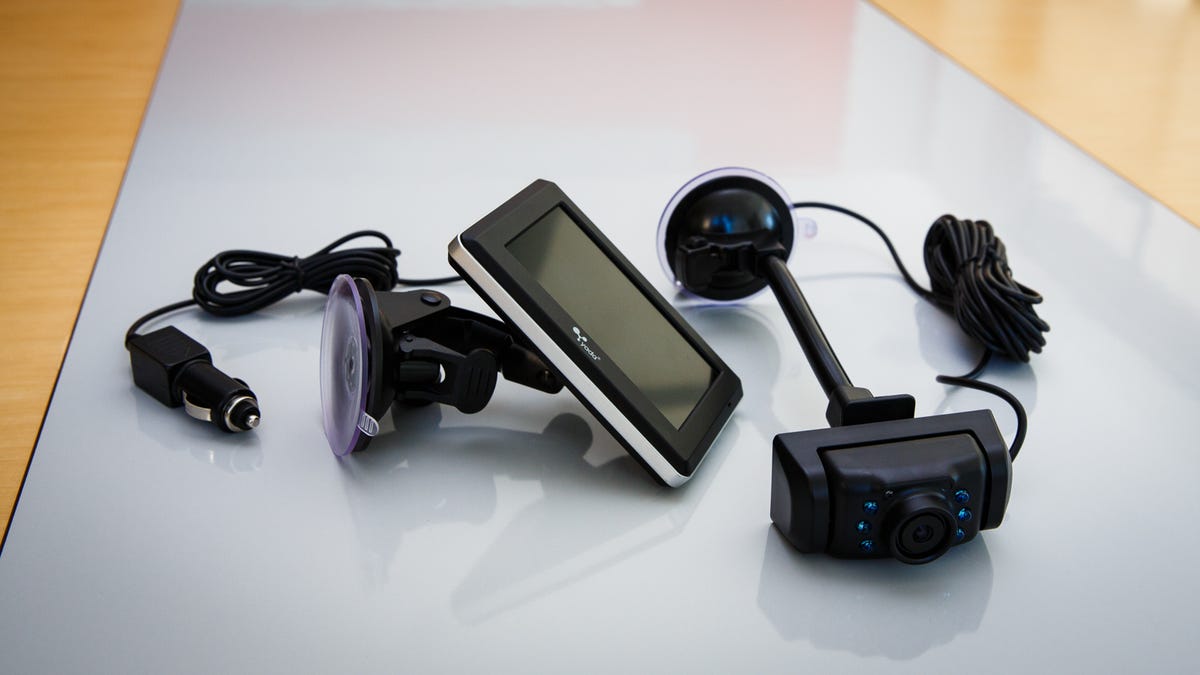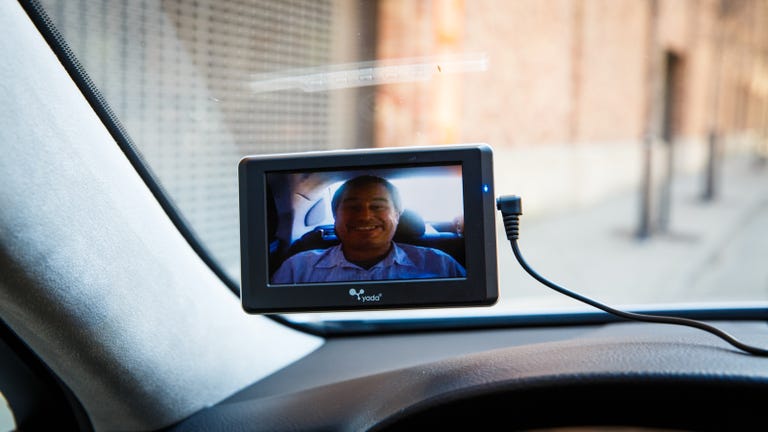 Why You Can Trust CNET
Why You Can Trust CNET Yada Digital Tiny Traveler Baby Monitor review: Tiny Traveler watches your baby on the road
Wonder what your infant is up to while you're driving? Tiny Traveler's in-car video system lets you watch your baby, an especially useful tool for rear-facing child seats.
Yada, maker of wireless back-up camera systems for cars, takes its video expertise and repackages it for another safety need: keeping track of young ones strapped into car seats while you drive. The Digital Tiny Traveler video system consists of a camera transmitting its imagery to a monitor over a wireless connection. But that doesn't mean there are no wires -- long power cables for both components will be challenging to keep out of the way.
The Good
The Bad
The Bottom Line
The Digital Tiny Traveler kit consists of two main components, a camera and monitor. The CMOS camera sits in a black plastic case mounted in a bracket that gives it about 45 degrees of vertical pivot. LED lights around the lens and a light sensor enable its night-vision capability. A mounting point at the back of the bracket lets you attach the camera to one of the three mounting options included in the kit: a suction cup, a headrest strap and a bar grip. Sticking up from the top of the camera, a 16-foot power cable ends in a plug compatible with 12-volt power points in cars.

The 4.3-inch video monitor comes in a nicely-shaped bezel with a row of buttons along the top for controlling brightness, contrast and pairing with the camera. The kit includes a suction cup mount so you can attach the monitor to the windshield or another smooth surface on your car. A port in the side of the monitor accepts the included 6.5-foot power cable, which also ends in a plug for a 12-volt power point.
The monitor installs as easily as any smartphone mount, the included suction cup mount offering lateral and vertical pivot points. Unlike a smartphone, however, you are going to need to plug the video monitor in. I prefer to put mounts like these at the lower-left corner of my windshield, which means either running the cable across the top of the dashboard and down the center stack to a power point, or tucking it up under the dashboard. If you mount it in the center of the windshield, you can run the cable directly down the center stack. In either case, the included cable is plenty long.
Conveniently, Yada includes three types of camera mounts for your car, adding flexibility to where you position it. Generally, you are going to want to use the suction cup mount attached to the inside of your rear window, for a reason I'll get into later. A strap mount fits around headrests, although I found the vertical strap barely long enough to encircle the headrest in a Lexus LS. An included clamp mount lets you attach the camera to a headrest's bar support, its ball joint letting you twist the camera to keep the lens upright.
The camera's power cable inconveniently sticks out of its top, and the lens doesn't turn, so you are stuck mounting the camera in only one orientation. The length of the cable means it will work in any car short of a recreational vehicle, but its 12-volt plug can lead to your first problem. Many cars only have one 12-volt power point, but the Digital Tiny Traveler kit needs two plugs. Yada should have made it so both power cables could connect to a single plug. As it is, you may have to buy a Y-adapter with one 12-volt plug and two 12-volt outlets.
Night and day
With the camera and monitor mounted in a Lexus LS (which thankfully did have two 12-volt power points), I began my testing in a parking garage to simulate night-time driving. I had the camera strapped to the headrest and focused on the rear seat immediately behind the driver seat. While short of HD quality, the imagery was bright and clear enough that I could easily make out details of a rear-seat passenger. Initially the image was overblown, but I used the adjustments on the monitor to bring down the brightness.
Driving out into bright sunlight, the image adjusted seamlessly to the changed lighting conditions. Driving along with the Digital Tiny Traveler system running, the image remained steady, with a clear focus on the rear seat. The only problem I found was the image on the monitor became difficult to see with bright sun behind the car, as glare on the monitor was exacerbated by a hot spot on the camera from the bright light through the back window, which blew out the darker back seat. With no antiglare hood over the monitor, I had to suffer with an indistinct image.
The system automatically fired up when I started the car, as the power points were only powered when the car was started. The monitor sports a power button, so I could turn it off if I didn't want to see the back seat. For cars with power points that are always on, you won't be able to turn off the camera, which could potentially drain the battery.
During my testing, there was no interference between camera and monitor, despite the wireless connection. Before strapping the camera into place, I extended it outside of my test car, stretching its cable to the farthest length. The image on the monitor looked just as clear as when it was close in.
At first glance, Digital Tiny Traveler may seem designed for the very lazy, who can't be bothered to turn their heads to glance at the back seat. That may be so for parents of older children, but infants under one year of age need to be strapped into a rear-facing child seat. From the driver seat you cannot glance back and see the child. As the first year is a time when you will want to be paying the closest attention to your child, the Digital Tiny Traveler makes for an essential vehicle accessory.


